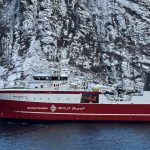Located in South-East Asia, Vietnam has a population of over 86 million and has been one of the main cooperating countries to receive Norwegian development assistance. In 2006 Vietnam produced around 1.7 million tons of seafood from aquaculture and catches of wild fish stocks constituted about 2 million tons. The standard of living in Vietnam has been rising rapidly in the last decades, accompanied by increasing activity in the area of fisheries and aquaculture. In 2004 Norad initiated a three year competence development programme at the University of Nha Trang in Vietnam, with NIFES providing expertise in the area of fish medication, hygiene and monitoring of undesirable substances in fish.
– In Norway, good systems to control the sale and use of theurapeutics for fish were established in the 80s and 90s, as well as regular analysis of residual concentrations of therpaeutics in fish. In this project, NIFES has provided relevant knowledge in this area through a number of workshops, many visits to Vietnam and an exchange of masters and doctoral fellows. This has contributed to an exchange of information useful to both parties, says researcher Bjørn Tore Lunestad at NIFES.
Monitoring of heavy metals
A monitoring project was also started as part of the project. Samples of sediment, feed and fish farming organisms were analysed for heavy metals. The feed organisms included various types of algae, crab and fish used for fish feed, while the fish farm species included shellfish, snails, sea cucumber and the fish species sea perch and red snapper. This resulted in the scientific article:
Heavy Metals in the Farming Environment and in some Selected Aquaculture Species in the Van Phong Bay and Nha Trang Bay of the Khanh Hoa Province in Vietnam, by Ngo Dang Nghia, Bjørn Tore Lunestad, Trang Si Trung, Nguyen Thanh Son and Amund Måge (Bull Environ Contam Toxicol, 2009, 82:75–79)








